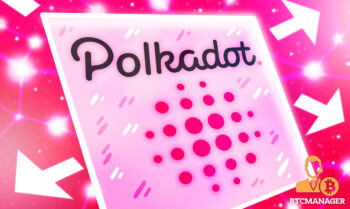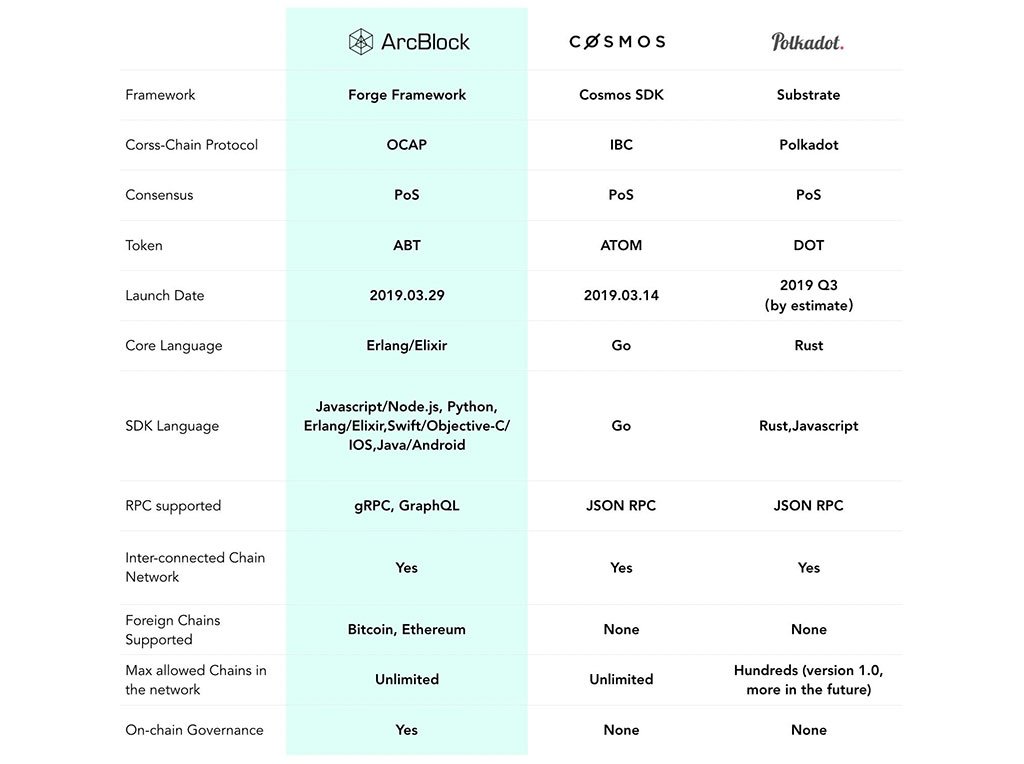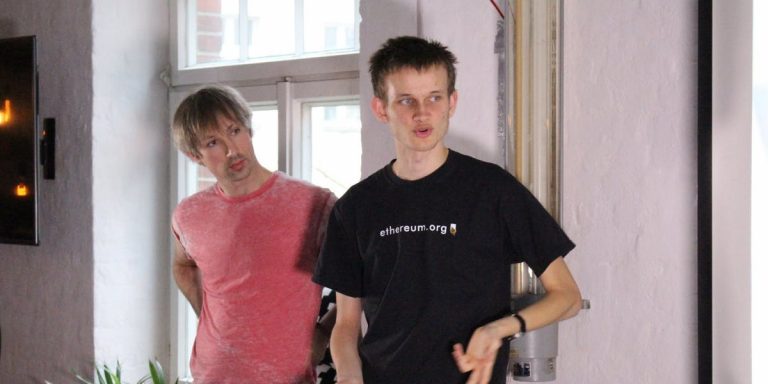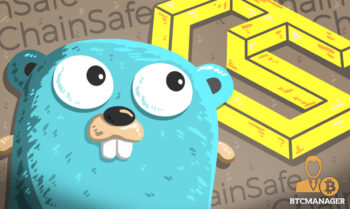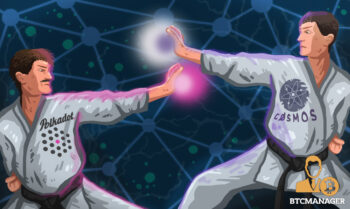2021-3-29 00:10 |
Polkadot connects different individual blockchains into a single network; it wants to do to the blockchain what the Internet did for solitary computers worldwide.
Polkadot was founded by Dr. Gavin Wood, Robert Habermeier, and Peter Czaban under the Web3 Foundation, a Swiss foundation dedicated to facilitating a user-friendly and fully functional decentralized web.
Wood is a Thiel Fellow and renowned technologist and has an extensive resume in the cryptocurrency and blockchain space– he is an Ethereum co-founder, founder of Parity Technologies, and the creator of smart contract programming language Solidity.
Habermeier, also a Thiel Fellow, is a reputable blockchain and cryptography developer.
Czaban is the Technology Director of the Web3 Foundation.
Polkadot was first proposed in a whitepaper on November 14, 2016, as a means to solve many of the pressing issues of the various blockchains at the time.
Why is Polkadot special?
Polkadot can process multiple transactions on several different blockchains in parallel using its “Parachain” feature. Dubbed a sharded multichain network, Polkadot can help blockchains such as Ethereum become more scalable. Further, users can add custom blockchains to the Polkadot network with little to no friction.
To better understand Polkadot’s value add, it’s best to explore the various issues that have limited and restricted blockchains. Let’s dive into our Polkadot guide.
Issue #1: Scalability.Most popular blockchains are not scalable due to their structure.
For example, once upon a time, it cost just a few pennies to a few dollars ETH equivalent to transact on Ethereum, the world’s most popular blockchain. Today, Ethereum gas fees have been as high as $250+.
The majority of blockchains bump into scaling issues in one way or another. It’s impossible to speed up transactions, and as the demand for transaction processing increases, each transaction begins to cost more.
Bitcoin, which is established as a medium to transfer value peer-to-peer, can only process 4.5 transactions per second.
Ethereum, introduced as Blockchain 2.0, fares a bit better at about 12 transactions per second.
In comparison, Visa/Mastercard processes upwards of 2,500 transactions every second.
The slow processing of payments is one of the main obstacles for Bitcoin and other cryptocurrencies in becoming commercial methods of payment.
Issue #2: No or Limited Communication and Interchanging of Data.Dozens of blockchains were created in isolation, and it’s not possible for them to communicate or exchange value between each other. For example, you can’t send BTC on the ETH network. Even with DeFi services that allow for working across multiple currencies and blockchains, oracle services like ChainLink must be used to get accurate real-time data on each coin’s current value.
Issue #3: Lack of Customization.Until the arrival of Ethereum, blockchains didn’t support any customization of the transfer of value from one owner to another. Bitcoin, for example, only allowed for peer-to-peer transactions. Smart Contracts made it possible to customize and program what can be achieved on a blockchain, to a limited extent.
How Does Polkadot Solve These Problems?Most blockchains tend to do one single thing very well. As user adoption increases, many blockchains are pushed to move away from specialization into generalization to stay competitive.
Adding new features on top of legacy blockchains tends to cost significantly more network resources and usually isn’t very effective.
Polkadot is a blockchain network that specializes in underlying processes such as interoperability and communication, security, scalability, and transaction verification.
By using Polkadot, other cryptocurrency projects with their own blockchains can focus on their core specialty, rather than building sub-par features for integration and scalability.
How Does Polkadot Work?Polkadot leverages four primary components to accomplish its goals: Relay Chain, Parachains, Parathreads, and Bridges.
The Polkadot network components (source: Polkadot website)
The Polkadot Relay Chain:The Relay chain is the primary architecture that holds everything together. Polkadot uses the Relay Chain mainly to verify transactions, similar to how Bitcoin and Ethereum use Proof of Work and Proof of Stake (POS) processes to verify transactions. On Polkadot, users can stake the native token DOT to help in the work of verifying transactions.
As the central component of Polkadot, the Relay Chain level coordinates the system as a whole, performing important functions like the verifying transactions and in making decisions on how to run the entire Polkadot architecture. There aren’t many programmable or customizable options at this layer of Polkadot.
The list of Relay Chain functions includes:
Transaction validation. Nomination of parties who will stake their coins for validation. Keeping historical data. Monitoring the entire Polkadot system’s health. The Parachain:A Parachain is a full-fledged blockchain application that lives on top of the Relay Chain. It is described by Polkadot in its whitepaper as “an application-specific data structure that is globally coherent and validatable.”
The Relay Chain, or the base layer, handles the security, validation of transactions, and governance functions of each Parachain.
The Parachain is similar to other blockchain networks such as Bitcoin or Ethereum Blockchain. Polkadot is unique in that it can contain multiple blockchains within itself. Hypothetically, it can house both the Bitcoin and the Ethereum blockchains within itself and place each one as a Parachain.
If both the Bitcoin and Ethereum blockchains are in Parachains within Polkadot, they’ll be able to communicate with each other, and can even pass transactions from one to the other– imagine converting BTC into ETH without an exchange. The blockchains communicate through a protocol called XCMP, which stands for “Cross-Chain Message Passing.”
The Parachain level only has a limited number of slots available, which are auctioned off by the Polkadot community.
Parachain’s offer a unique element of security. In theory, the Bitcoin blockchain can be hacked with a 51% attack. Such an attack could be prevented by the collective nature of Parachains under the overall security structure of the Relay Chain.
Parathreads:Parathreads are temporary slots on the Polkadot network, primarily used to test out ideas.
Parathreads are similar to Parachains in that they allow for the building of a special-use blockchain or application.
The difference between Parathreads and Parachains is that Parachains are more resource-intensive and more permanent than Parathreads– Parachains require a significant up-front investment to cover the high throughput.
As Polkadot puts it, “Parathreads have the exact same API and functionality as parachains, but on a pay as you go basis.”
Think of Parathreads and Parachains are like a Process and a Thread that runs in a computer’s CPU. A Process may have many Threads, and the Threads in a Process must share the resources of the process.
Similarly, Parathreads must also share resources within a Parachain because they are temporarily leased spots on a Parachain to practically test ideas in a live environment.
Parathreads also allows smaller community projects that couldn’t compete in an auction for an exclusive Parachain. The Parathreads allow these projects to experiment and demonstrate efficacy before committing to the upfront costs of a Parachain.
The Polkadot network (source: Polkadot website)
Since Parathreads must share scarce resources among various Parathreads running on a particular Parachain; as such, the communities on each Parathread must compete for resources with each other, and must pay for each processing block to the owners of the hosting Parachains.
Parachains that have decreased in community size and don’t use validation resources can be moved to become Parathreads to free up the limited Parachain slots while preserving functionality.
Chains that would otherwise be unable to compete in an auction of a Parachain of their own or do not think that to be economically viable can share the Polkadot security resources by paying for processing each block to the hosting Parachains.
Bridges:Bridges, or the ability for an individual blockchain to communicate and transfer value to another, have been lacking in traditional blockchain technology.
Say you want to purchase an NFT priced in ETH, but you only have BTC. Traditionally, you’d have to convert BTC into fiat and then convert into ETH, or buy ETH for BTC on an exchange. You simply can’t transfer value or data from one Blockchain to the other without an intermediary layer, whether that be an exchange or fiat.
A neat graphic for bridges (source: Polkadot website)
Bridges change that restriction, and they allow Parachains, which are essentially blockchains encased within the Polkadot ecosystem, to communicate and share data.The economic sovereignty and diversity of the respective blockchains is not affected when communicating or transacting via bridges.
Bridges are available both in centralized or decentralized versions, perhaps leading to a path of communication with central banks if (when) they begin minting digital fiat currency.
It is important to note that Bridges are a planned feature of the Polkadot Blockchain, and still need to be put into production. According to Polkadot, “It will be updated as more information is determined and available.”
The Polkadot Token (DOT): Tokenomics and Governance:Polkadot utilizes its native token, DOT, for transaction processing payments and governance. DOT is also used for staking on the Relay Chain PoS (Proof of Stake) validation.
The DOT token plays multiple roles across the Polkadot network like compensating validators, as a governance token, or as a currency.
There are currently 1 billion allocated DOT tokens, up from the initial max supply of 10 million DOT due to a network redenomination.
Polkadot (DOT) PriceThe DOT token has traded between $2.90 and $40.70 since its launch in August 2020. The main exchanges trading Polkadot (DOT) are usually Binance, OKEx, and Houbi Global.
Polkadot StakingUnlike the Power of Work (PoW) consensus where miners use electricity to validate blocks to be added to the Blockchain, the Proof of Stake (PoS) requires users to validate blocks by staking their coins. In the PoW consensus, anyone can create a node and mine the blocks. In contrast, in the PoS, the Validators are specific participants that run the nodes (also called Validator Nodes) to propose and validate blocks to be added.
Like other PoS systems, Polkadot users can use a DOT to:
to stake and for the owner to become a validator of the entire ecosystem’s transactions. nominate their DOT to other validators, or become a nominator themselves to share the rewards.If a DOT holder does not wish to do the verification itself they can also nominate another DOT holder to stake their DOT tokens; it’s as if you are selecting someone to be your representative. A DOT holder can nominate up to 16 validators to stake their tokens for them. Hence, Polkadot’s consensus mechanism is called NPoS (nominated proof-of-stake.)
Final ThoughtsIt’s no coincidence the same developers working on scaling Ethereum into Ethereum 2.0 are also bringing the world the Polkadot ecosystem.
In building Polkadot, the team has paid particular attention to remedy all the deficits that plagued and limited earlier blockchain systems, such as Bitcoin’s lack of customizability or Ethereum 1.0’s lack of scalability.
The Polkadot founding team (source: Polkadot website)
Will Polkadot be able to fulfill its vision of connecting the world’s blockchains into one cohesive, interoperable ecosystem? It’s quite a challenge, but the Polkadot team seems to be exceptionally qualified to do so.
The post What is Polkadot? A Beginner’s Guide on the Blockchain Super City appeared first on CoinCentral.
origin »Polkadot [IOU] (DOT) на Currencies.ru
|
|



